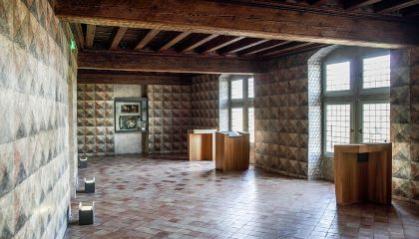A cultural approach to sacred art
What do a Romanesque Virgin and Child, a terracotta soldier from the tomb of a Chinese emperor, an Egyptian sarcophagus and a Burmese Buddha have in common? Taking a different approach than that of traditional Fine Arts museums, the Musée d'Art Sacré du Gard secular museum creates a dialogue between objects that are not usually seen together. While they can be appreciated for their aesthetic qualities, all are illustrations of different cultures and beliefs, but which no longer hold meaning for many of us. The museum invites visitors to contemplate exceptional works of sacred art, while encouraging them to decipher their meaning through a cultural approach. The concept, initiated by the Gard Département, is underpinned by the certainty that understanding this common heritage is inseparable from the secular ideal.
Architectural gem of Gard heritage
The Maison des Chevaliers (literally "house of the knights") is a sumptuous medieval building listed as a French Historic Monument, which according to popular tradition is said to have accommodated the Knights Templar on their return from the Holy Land. Each of them is said to have painted their coat of arms as a record of their visit. Known for its rich décor, it was actually the home of the Piolencs, a rich and powerful wheat merchant family from the Rhône Valley. In the 14th century, they had a remarkable court of justice built within their residence, an indication of their social standing and attachment to royal power. In 1450, a painter back from Tuscany, where the Renaissance was in full bloom, decorated their new staterooms overlooking the Rhône. Painstaking restoration has returned this superb ensemble to its former glory, which now serves as a setting for the collection of an innovative museum.

